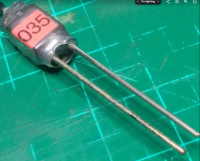- Thread starter
- #781
odam2k
Well-Known Member
Sorry, I'm spending my time working on the blog site. I'm trying to make it easier for people to find information on individual pieces of the project, for example, the soil moisture sensor, and how to make one.
It will also allow me to ramble on endlessly on the blog, and not pile up 10 new posts here every day that aren't really conveying any useful information...
I'll try to keep my posts here as productive as possible...
It will also allow me to ramble on endlessly on the blog, and not pile up 10 new posts here every day that aren't really conveying any useful information...
I'll try to keep my posts here as productive as possible...







